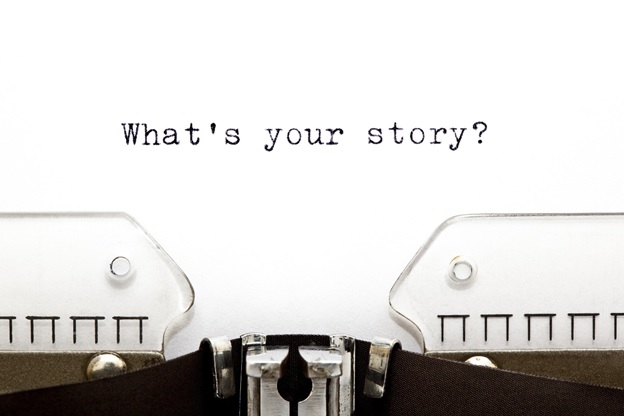 In yesterday’s post, we discussed how some of the hottest brands – among both Millennials and Boomers – make solid products or provide great services and provide a strong narrative – in other words, they have a great story that sets them apart.
In yesterday’s post, we discussed how some of the hottest brands – among both Millennials and Boomers – make solid products or provide great services and provide a strong narrative – in other words, they have a great story that sets them apart.
Radio isn’t any different. Problem is, even though many stations have amazing stories that would enhance their brand, you rarely hear that part on the air, see it in PR, or have it show up in marketing materials. All too often, it’s assumed that everyone knows a station’s story arc. And most of the noise stations (and the companies that own them) make has to do with utilitarian nuts and bolts attributes and benefits:
“We’re the #1 Country station.”
“Rocking Des Moines for 30 years.”
“The most music with the fewest commercials.”
These aren’t stories. They are product claims and there’s nothing about them that are cool, buzzworthy, or viral. No one’s talking about the fact you own the “Rock Hill” – except you.
It is easier to rely on rankers or photos and lazy social media posts, rather than providing consumers (and advertisers) with the narrative that can move people emotionally. One of the great marketing minds in radio, Heidi Raphael, tackled the same topic yesterday in a story that appeared in Radio Ink. I worked directly with Heidi at 97Rock/Buffalo and at WRIF/Detroit, before she moved up the ranks to an executive position with Greater Media. In yesterday’s column, she posed the same question we’ve been tackling in this blog:
“What’s your story? For companies looking to stand apart from their competition, storytelling is a great way to communicate a message about your organization in a real, relevant and relatable way.”
With multiple constituencies to serve – listeners, advertisers, and the community – most stations would tell their story with Nielsen numbers or imaging statements rather than making a passionate connection to people who would appreciate a juicy and compelling story.
The lack of storytelling ultimately damages a station – or even a company – because when a brand fails to provide a clear and interesting narrative, people will do it themselves. And they are frequently wrong. Oftentimes in focus groups, I’ll ask respondents to tell me the story of a station they regularly listen to or the details behind why the morning show left. The result is often a lot like that kid’s game, “Telephone,” where the narrative gets warped by misperceptions, inaccuracies, and the fact that left to their own devices, people make up some pretty crazy stuff.
Part of that is human nature, but the rest can be attributed to brands not taking the time or making the effort to put out their own narratives. In many cases, the story arc of a heritage radio station – whether it’s the big News/Talker in the market or the venerable Rock station is a good one, dying to be told and passed onto others.
In other situations, a station’s story is tied to its company – its ethos and beliefs, and patriarchs and matriarchs. The radio companies launched many decades ago by the likes of Stanley Hubbard, Don Curtis, Jim Goodmon, George Beasley, and Joe Field continue to operate in the spirit of their founders. Other companies may be more recent creations, but often have unique attributes (community service, event marketing) that set them apart, providing them with a narrative that can touch both audiences and advertisers.
Then there are the stations that have been around for decades, and continue to be beacons in their communities. Here in Detroit, stations as diverse as WJR, WJLB, and WRIF have consistently provided entertainment, information, and a sense of place to generations of Motor City denizens. And they each have great stories to support their success. It’s like that in market after market throughout the country.
For many brands, their personalities are part of the story. And while stations and the companies that own them often sweat those contract negotiations every few years, the truth is that few actively tell the stories of their personalities, teams, and shows they’ve worked so hard to coach, build, and grow.
And for reinforcement the power of the DJs – or players – consider what Major League Baseball is doing right now. Yes, the Cubs are a story. So are the Indians. But there are 28 other teams and hundreds of players who have great stories, too. To stir up interest as this new 2017 season gets underway, MLB is getting very active in the storytelling department.
AdAge reporter, Anthony Crupi, recently revealed the strategy in an article aptly named, “Youth Will Be Served as MLB Promotes Drama of the Game.” He observes how the league is treating its traditional game and its long season like a reality TV show, with plots, characters, and of course, up-and-coming players designed to appeal to a sorely needed younger generation of fans.
Another MLB spot features the Cubs’ Kris Bryant, Anthony Rizzo, and a super Chicago fan you may have heard of – Eddie Vedder. (Now if they could just make the game go a little faster and dump the DH.)
A great narrative shouldn’t just be confined to traditional stations or heritage personalities. Storytelling should be part of new launches, too. A new sign-on ought to be more than just about 10,000 songs in a row commercial-free, liners in a box, and a safe list. What’s the story behind a new radio start-up? What was the trajectory of that decision? What were the other choices? Where was the emotion and drama that led to making the call? And who are the people – on the air and off – who contributed to making a new station sound like more than just a clever name and a dial position?
I thought about that the other day when I heard the legendary KZEW – better known in Dallas circles, as The Zoo – was about to make a splashy return. But not on the radio. The new incarnation of The Zoo is a stream, but the story is a juicy one. It’s about resurrection and redemption. It’s about nostalgia with a modern twist. It’s about getting the band back together. It’s about rebuilding on a musical tradition that was never about a collection of songs and voicetracked DJs. The great plot lines go on and on.
You can read the crazy, circuitous narrative that describes this new incarnation of The Zoo in this Dallas Morning News article. The station’s digital comeback raises the question about whether a stream can compete against traditional stations with towers and transmitters in one of the country’s largest markets? We’ll soon see, but it already has done something most of the traditional players in the markets haven’t accomplished for years – told a compelling story.
Part of the reason why many radio brands fail to tell their stories is connected to the reality the average station has been sold several times. As old owners are pushed aside and new ones come into the market, part of the station’s heritage is simply lost in these transitions. There are occasionally “historians” on the staff – people who have somehow managed to survive the various ownership and regime changes. Chances are, they know a lot about the brand, and can help keep the legend alive.
But whether stations start out with a blank slate or there’s a 30 year history, marketers, digital managers, and content creators need to work harder to get their stories out on all the available channels. That might mean using the power of social media and other tools to integrate the audience – their memories, emotions, and impressions, and even their photos, videos, and merch.
Radio stations, clusters, and companies have the potential to frame their accomplishments, to provide fans and advertisers alike with the impetus to passionately support them because their narratives are compelling, local, rich, and authentic. I think of all the truly great stations I’ve been associated with over the years, and all too often, they have stories that largely goes untold. It’s a missed opportunity.
Everyone else in the world of brands is actively working on their story arcs.
It’s time for radio to tell its story.
Tim Davis update: Thank you to all your kind comments and messages of sympathy to Tim’s family and the Jacobs Media and jācapps teams. Here are the details about Tim’s memorial service, set for Tuesday, April 18, at 4pm. It will take place at the Trinity Presbyterian Church, 4871 Virginia Parkway, McKinney, TX 75071. Kathy insists – per Tim’s lifestyle – that dress be casual. No suits or ties. Details on an educational trust for the kids are coming soon.
- What Is It With Female Robot DJs? - April 30, 2025
- Why “Dance With Those Who Brung You” Should Be Radio’s Operating Philosophy In 2025 - April 29, 2025
- The Exponential Value of Nurturing Radio Superfans - April 28, 2025




Leave a Reply